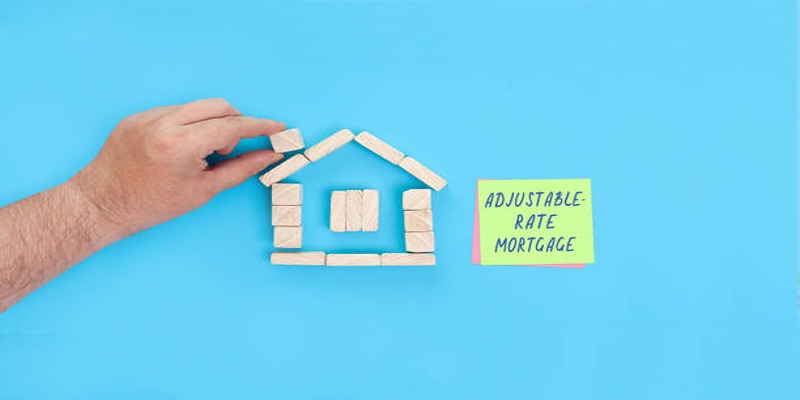When selecting a mortgage, borrowers often grapple with the pros and cons of adjustable-rate mortgages (ARMs) versus the stability offered by fixed-rate mortgages. Notably, 10/1 and 10/6 ARMs typically present lower initial interest rates compared to conventional 30-year fixed-rate loans, making them appealing choices for many homebuyers. The main difference between these ARMs lies in their adjustment periods: the 10/1 ARM adjusts annually after an initial ten-year fixed period, while the 10/6 ARM adjusts every six months following the initial fixed term. Understanding these distinctions is vital for prospective homeowners, as they can significantly influence monthly payments and long-term financial planning. This guide will delve into the key factors to consider when comparing these mortgage options.
Understanding ARM Structures

Adjustable-rate mortgages (ARMs) come with varying structures that define how and when the interest rate is adjusted throughout the loan's lifespan. These structures typically feature an initial fixed-rate period, after which the interest rate adjustments are determined by a designated index plus a margin set by the lender. Common indices include the London Interbank Offered Rate (LIBOR) or the Cost of Funds Index (COFI). The margin, which remains constant, is added to the index rate to establish the new payment rate at each adjustment. Importantly, ARMs also incorporate caps that limit the amount the interest rate can increase during a specific adjustment period and over the entire life of the loan, providing borrowers with some level of protection against steep increases.
Definition of 10/1 ARM
The 10/1 ARM is a type of adjustable-rate mortgage that features an initial fixed rate for ten years, after which the interest rate adjusts annually based on a designated index and margin. This loan typically comes with an adjustment cap of 2% per year and a lifetime cap of 5%. For example, if the initial fixed rate is 4%, in the eleventh year, the interest rate can rise to no more than 6%. Over the life of the loan, the maximum increase would be capped at 9%, regardless of market fluctuations.
Definition of 10/6 ARM
Similar to the 10/1 ARM, the 10/6 ARM also offers a ten-year fixed-rate period, but with semi-annual adjustments after that. This loan typically comes with an adjustment cap of 1% every six months and a lifetime cap of 6%. For instance, if the initial fixed rate is 4%, in the eleventh year, the interest rate can rise to no more than 5%, and in the twelfth year, it can increase to no higher than 6%. Over the life of the loan, the maximum increase would be capped at 10%, providing slightly less protection compared to the 10/1 ARM.
Pros and Cons of Choosing an ARM over Fixed-Rate Mortgages
Advantages of ARMs
- Lower Initial Rates: The primary advantage of ARMs is that they offer lower initial interest rates compared to fixed-rate mortgages, making them an attractive option for those looking to save money in the short term.
- Potential for Savings: If interest rates remain stable or decrease over time, borrowers with ARMs can potentially save a significant amount of money on monthly payments compared to those with fixed-rate loans.
- Flexibility: ARM structures often come with more flexibility, such as the ability to make extra principal payments without penalty. This feature can be beneficial for homeowners who want to pay off their mortgage faster.
Disadvantages of ARMs
- Risk of Higher Interest Rates: As the name suggests, adjustable-rate mortgages feature adjustments in interest rates, which means borrowers may face higher monthly payments if the index and margin increase over time.
- Potential for Negative Amortization: In some cases, an ARM's interest rate can adjust to the point where it does not cover the full amount of the monthly payment, resulting in negative amortization. This occurrence leads to a loan balance that increases instead of decreases.
- Uncertainty: Unlike fixed-rate mortgages with consistent payments throughout their lifespan, ARMs come with varying payment amounts depending on interest rate adjustments. This uncertainty can make it challenging to budget and plan for long-term financial goals.
Benefits of 30-Year Fixed-Rate Mortgages
While ARMs have their advantages, 30-year fixed-rate mortgages also come with significant benefits that may make them a more appealing option for some borrowers. These include:
- Stable Payments: With a fixed-rate mortgage, borrowers can expect consistent monthly payments throughout the loan's lifespan, providing financial stability and predictability.
- Protection Against Rate Increases: Unlike ARMs, which feature caps on interest rate increases, traditional 30-year fixed-rate loans offer complete protection against rising interest rates, making it easier to budget and plan for long-term expenses.
- Easier to Qualify For: Fixed-rate mortgages are typically easier to qualify for compared to ARMs because they do not come with the risk of payment shock, making them a safer option for lenders.
Comparing 10/1 and 10/6 ARMs to Fixed-Rate Mortgages

When comparing these mortgage options, it's essential to consider the differences in payment structures and potential risks. While ARMs offer lower initial rates and potential for savings, they also come with uncertainty and the possibility of higher rates over time. On the other hand, fixed-rate mortgages provide stability and protection against rate increases but may have slightly higher initial rates. It's crucial to carefully evaluate your financial goals and risk tolerance to determine which option is best for you. Additionally, it may be beneficial to consult with a financial advisor or mortgage specialist before making a final decision.
Choosing the Right Mortgage Option
When deciding between a 10/1 or 10/6 ARM and a traditional 30-year fixed-rate mortgage, it's essential to consider your financial goals, risk tolerance, and long-term plans. For those looking to save money in the short term or planning on selling their home before the initial fixed period ends, an ARM may be a suitable option.
However, if you value stability and are planning on living in your home for an extended period, a 30-year fixed-rate loan may be the better choice. Ultimately, it's crucial to carefully weigh the pros and cons of each type of mortgage and select the option that aligns best with your unique financial situation. So, it's essential to carefully research and consult with professionals before committing to a particular loan type.
Conclusion
While adjustable-rate mortgages offer lower initial rates and potential for savings in the short term, they also come with risks and uncertainty. Fixed-rate mortgages provide stability and protection against rising interest rates but may have slightly higher initial rates. It's crucial to evaluate your financial goals and risk tolerance and seek professional guidance when choosing between these mortgage options. Whichever option you choose, make sure to thoroughly understand the terms and conditions before signing on the dotted line. By being informed about your mortgage options, you can make a sound decision that aligns with your long-term financial goals. So, it's vital to consider all factors and choose the mortgage type that best fits your needs and preferences.




